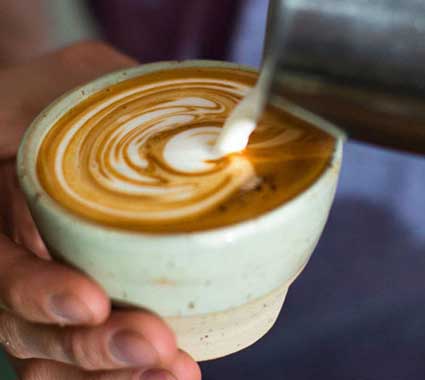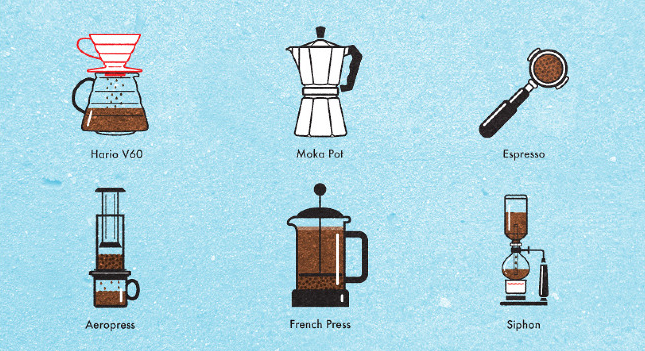History of coffee

The history of coffee is extraordinary. It includes the history of art, philosophy, mores, wars and love.
The past three centuries bear witness to even more intensive integration, almost inseparable, human being with coffee. In fact, it is difficult to determine who first appeared on earth, man or coffee tree; some admit, that the coffee tree was the first.
Hardly anyone is aware, that the term "coffee" is probably derived from, same as cognac or champagne, from the definition of the source area, that is, the birthplace of the coffee plant, Ethiopian terrain Kaffa.
A separate type of etymology for the word "coffee" tells about its origins in the Turkish definition of wine, meaning "qavah" or "kahve". As the consumption of alcohol was still strictly forbidden by Muslims, They devoted themselves to coffee consumption, the influence of which they considered as stimulating as wine. After a while, the term wine was transferred to this popular black brew.
The words "qavah" or "kahve" also gave rise to the Polish name "coffee".
Coffee contains up to two percent caffeine. With a simple cup of coffee, we consume approximately one hundred and fifty milligrams of this substance. Caffeine dilates the blood vessels and, as a result, stimulates the cerebral cortex. drinking two or more cups of coffee can have effects such as speeding up the thinking process, increase matchmaking, raise the mood or make it easier to assimilate and remember numbers, concepts or strings of thought.
Caffeine affects the taste of coffee.
The roasting process leads to a reduction in the caffeine content. Strongly roasted coffee, e.g.. espresso, it will have less caffeine than the bright Colombian coffee beans.
Catering coffees are not available in retail sale. They are characterized by the highest form , rich aroma and great taste.
Espresso (espresso coffee) - the name of the method of preparing coffee in a unique machine, by passing approx. 25-30ml. hot (ok. 90ºC) high pressure water (9 – 15 bars) by finely ground coffee beans. Both the name of the resulting drink.
Espresso comes from Italy, where in 1901 year, Luigi Bezzera invented the first espresso machine. It was indeed a structure based on the flow of steam and water, which led to taste changes in the extract. W 1903 In the year Bezzera handed over his patent to Pavoni who modernized the machine and made it popular worldwide. Still, despite minor technical modifications, the issue of steam, which transformed the flavor of the coffee, remained a problem. He solved it in 1947 year of Giovani Achille Gaggia who replaced the pair with a new heating structure. The term broth comes from Italy, and contrary to popular belief, there is no relation to the speed of preparation, but it comes from the Italian adjective espressivo – expressive, clear.
Espresso is very attractive in Italy, Spain, Argentina, also in the countries of southern Europe. There too often (to the surprise of foreign tourists) it is obtained after ordering in a cafe / restaurant simply coffee. Due to its unique taste, Espresso has been gaining recognition in recent years both in other European countries and in America.












